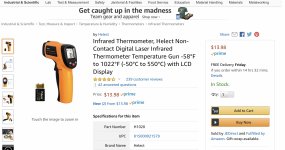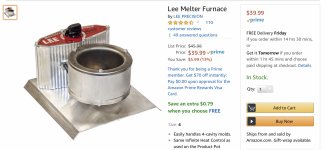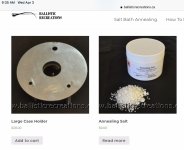plans ? i use a lee meltingpot but if there are better systems i like to get the info how to build one /what areyou using for salt mixture ?
IIRC Lee pots have a simple mechanical thermostat.
The heating element is either full on or full off.
This makes the temperature wobble around a set point.
The variation can be larger though.
There are a number if salts that can be used to create a mixture that has a desired melting temp.
Potassium nitrate and sodium nitrate are common.
2 parts potassium to 1 part sodium IIRC.
I still put some Tempilaq on the head as a warning/backup.
Not real high stuff either.
Around 450 F. Low enough that no annealing should occur if you do just hit it.
If that spot melts the case is scrap.
Amazon has some nice 'kits' of a PID controller, a TRIAC to boost output power for the load the pot puts on the system, a heat sink for the TRIAC, a thermocouple in a probe to measure the temperature.
All in a kit around $40. Like this one:
https://www.amazon.com/Inkbird-Thermostat-Temperature-Controller-Thermocouple/dp/B01489AQAW/ref=sr_1_6?crid=2QPSWHBGNN2NT&keywords=pid+controller+kit&qid=1553795537&s=gateway&sprefix=pid+controller+%2Caps%2C151&sr=8-6
A lot of the PID manufacturers have suggested schematics for setup.
For a 120 V load (the pot) parts are pretty common and standardized.
And keep in mind the idea is to partly anneal the brass.
If it goes dead soft in the neck you will have very close to zero neck tension.
An annealing temperature that allows for about a 1 minute dwell at temperature is desirable.
It allows tie for the brass 'crystal' structure to move around without growing excessively large or over annealing.




